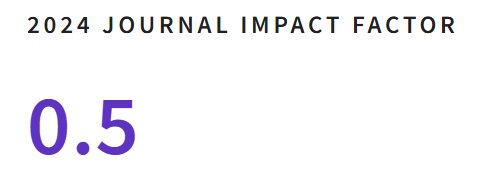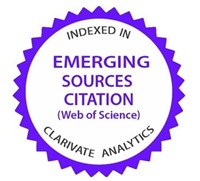Fracciones de tomate de árbol (Solanum betaceum) con potencial funcional obtenidas por ultrafiltración
DOI:
https://doi.org/10.35588/jhe5yp04Palabras clave:
tamarillo, compuestos fenólicos, tamaño de corte de peso molecular (MWCO)Resumen
El tomate de árbol (Solanum betaceum) contiene importantes compuestos bioactivos, tales como compuestos fenólicos, carotenoides, vitaminas y minerales, los cuales presentan efectos benéficos en la salud humana. El propósito de esta investigación fue evaluar el potencial de membranas cerámicas con diferente tamaño de poro o tamaño de corte de peso molecular (MWCO, por sus siglas en inglés) (50 nm a 1 kDa) en la obtención de fracciones enriquecidas en compuestos fenólicos del tomate de árbol. Inicialmente, el jugo de tomate de árbol se sometió a dos pretratamientos, maceración enzimática y centrifugación. Posteriormente, el supernadante fue sometido a un proceso de clarificación por microfiltración y se obtuvieron las diferentes fracciones por un proceso de ultrafiltración usando una unidad piloto de filtración de flujo tangencial (Membralox®, modelo XLAB 5, Pall Corporation, France) y se analizaron las características fisicoquímicas de estas. La fracción UF-10 permitió concentrar los compuestos fenólicos (FC=1,5) con características de color (L*=52,4±3,46, C*=20,6±2,89, hº=86,0±2,30), sólidos solubles totales (10,4±0,28 ºBx), sólidos insolubles totales (0,49±0,26%) y acidez titulable (1,55±0,04%) aceptables. Por lo cual, esta fracción podría usarse como un ingrediente funcional en la industria alimentaria y nutracéutica.
Descargas
Referencias
Agronet (2022). Estadísticas del cultivo del tomate de árbol. Red de Información y Comunicación del Sector Agropecuario Colombiano. https://www.agronet.gov.co/estadistica/Paginas/home.aspx?cod=1
Arboleda-Mejia, J.A. et al. (2022). Membrane-Based Operations for the Fractionation of Polyphenols and Polysaccharides from Winery Sludges. Food and Bioprocess Technology, 15(4), 933-948. DOI https://doi.org/10.1007/s11947-022-02795-3
Association of Official Analytical Chemists (AOAC) (1990). Official Methods of Analysis. AOAC International.
____. (2000). Official Methods of Analysis. AOAC International.
Bailon-Moscoso, N. et al. (2020). Phytochemistry and Bioactivity of Solanum betaceum Cav. In H. Nijaranja and V. Anant (eds.), Bioactive Compounds in Underutilized Fruits and Nuts (pp. 157-174). Springer. DOI 10.1007/978-3-030-30182-8_9
Beltrán et al. (2016). Calidad de la materia orgánica y disponibilidad de macro y micronutrientes por la inclusión de trigo como cultivo de cobertura. Ciencia del suelo, 34(1), 67-79.
Chen, X., Fedrizzi, B., Kilmartin, P.A., and Quek, S.Y. (2021). Free and Glycosidic Volatiles in Tamarillo (Solanum betaceum Cav. Syn. Cyphomandra betacea Sendt.) Juices Prepared from Three Cultivars Grown in New Zealand. Journal of Agricultural and Food Chemistry, 69(15), 4518-4532. DOI 10.1021/acs.jafc.1c00837
Cuesta, L., Andrade Cuvi, M. J., Moreno Guerrero, C., and Concellón, A. (2013). Contenido de compuestos antioxidantes en tres estados de maduración de tomate de árbol (Solanum betaceum Cav.) cultivado a diferentes alturas (m.s.n.m.). Enfoque UTE, 4(1), 32-49. DOI https://doi.org/10.29019/enfoqueute.v4n1.23
De Farias, V.L. et al. (2020). Enzymatic Maceration of Tabasco Pepper: Effect on the Yield, Chemical and Sensory Aspects of the Sauce. LWT, 127, 109311. DOI https://doi.org/10.1016/J.LWT.2020.109311
Destani, F., Cassano, A., Fazio, A., Vincken, J.P., and Gabriele, B. (2013). Recovery and Concentration of Phenolic Compounds in Blood Orange Juice by Membrane Operations. Journal of Food Engineering, 117(3), 263-271. DOI https://doi.org/10.1016/j.jfoodeng.2013.03.001
Diep, T.T., Rush, E.C., and Yoo, M.J.Y. (2022). Tamarillo (Solanum betaceum Cav.): A Review of Physicochemical and Bioactive Properties and Potential Applications. Food Reviews International, 38(7), 1343-1367. DOI https://doi.org/10.1080/87559129.2020.1804931
Dos Santos, L.F. et al. (2020). Clarification and Concentration of Yerba Mate Extract by Membrane Technology to Increase Shelf Life. Food and Bioproducts Processing 122, 22-30. DOI https://doi.org/10.1016/J.FBP.2020.04.002
Espín et al. (2016). Phenolic Composition and Antioxidant Capacity of Yellow and Purple-Red Ecuadorian Cultivars of Tree Tomato (Solanum betaceum Cav.). Food Chemistry, 194, 1073-1080. DOI https://doi.org/10.1016/j.foodchem.2015.07.131
Figueroa-Flórez, J., Ciro-Velásquez, H. and Salcedo, J. (2016). Evaluación de estabilidad coloidal en bebidas de tomate de árbol. Agronomía Colombiana, 1, 792-795.
García, J.M. et al. (2016). Chemical Studies of Yellow Tamarillo (Solanum betaceum Cav.) Fruit Flavor by Using a Molecular Sensory Approach. Molecules, 21(1729), 1-11. DOI https://doi.org/10.3390/molecules21121729
Ghosh, P., Pradhan, R.C., Mishra, S., and Rout, P.K. (2018). Quantification and Concentration of Anthocyanidin from Indian Blackberry (Jamun) by Combination of Ultra- and Nano-Filtrations. Food and Bioprocess Technology, 11(12), 2194-2203. DOI https://doi.org/10.1007/s11947-018-2176-4
Hu, C., Gao, X., Dou, K., Zhu, C., Zhou, Y., and Hu, Z. (2023). Physiological and Metabolic Changes in Tamarillo (Solanum betaceum) during Fruit Ripening. Molecules, 28(4), Article 4. DOI https://doi.org/10.3390/molecules28041800
Instituto Colombiano de Normas Técnicas y Certificación (ICONTEC) (1997). NTC 4105 Frutas frescas. Tomate de árbol. Especificaciones. Instituto Colombiano de Normas Técnicas y Certificación.
Jha, S.N. (2010). Colour Measurements and Modeling. In E.S.N. Jha (Ed.), Nondestructive Evaluation of Food Quality: Theory and Practice (pp. 17-40). Springer.
Koop, B.L. et al. (2021). Bioactive Compounds from Jambolan (Syzygium cumini (L.)) extract Concentrated by Ultra- and Nanofiltration: A Potential Natural Antioxidant for Food. Plant Foods for Human Nutrition, 76(1), 90-97. DOI https://doi.org/10.1007/s11130-021-00878-8
Kumar, S., Shree, B., Sharma, S., Sharma, A., and Priyanka, P. (2024). Tree Tomato: Underutilized Vegetable for Sustainable Nutritional and Economic Security. Scientia Horticulturae, 327, 112867. DOI https://doi.org/10.1016/j.scienta.2024.112867
Le, T.T.H., Vu, L.T.K., and Le, N.L. (2021). Effects of Membrane Pore Size and Transmembrane Pressure on Ultrafiltration of Red-Fleshed Dragon Fruit (Hylocereus polyrhizus) Juice. Journal of Chemical Technology & Biotechnology, 96(6), 1561-1572. DOI https://doi.org/10.1002/jctb.6672
Martínez-Girón, J. (2022). Ultrasound-Assisted Production of Sweet Pepper (Capsicum annuum) Oleoresin and Tree Tomato (Solanum betaceum Cav.) Juice: A Potential Source of Bioactive Compounds in Margarine. Biomass Conversion and Biorefinery, 14, 10443-10457. DOI https://doi.org/10.1007/s13399-022-03195-5
Montero-Barrantes, M. (2008) Estudio del proceso para la elaboración de jugo clarificado de mora por microfiltración tangencial. Universidad de Costa Rica.
Muñoz-Puntes, E., Rubio, L.A., and Cabeza, M.S. (2012). Comportamiento de flujo y caracterización fisicoquímica de pulpas de durazno. Scientia Agropecuaria, 3(2),107-116.
Nor, N.Z.N.M. et al. (2018). Comparison of Physicochemical, Antioxidant Properties and Sensory Acceptance of Puree from Tamarillo and Tomato. Journal of Science and Technology, 10(3), 25-31. DOI https://doi.org/10.30880/jst.2018.10.03.005
Orqueda, M.E., Torres, S., Verón, H., Pérez, J., Rodríguez, F., Zampini, C., and Isla, M.I. (2021). Physicochemical, Microbiological, Functional and Sensory Properties of Frozen Pulp of Orange and Orange-Red Chilto (Solanum betaceum Cav.) Fruits. Scientia Horticulturae, 276, 109736. DOI https://doi.org/10.1016/j.scienta.2020.109736
Orqueda, M.E., Torres, S., Zampini, I.C., Cattaneo, F., Di Pardo, A.F., Valle, E.M., Jiménez-Aspee, F., Schmeda-Hirschmann, G., and Isla, M.I. (2020). Integral Use of Argentinean Solanum betaceum Red Fruits as Functional Food Ingredient to Prevent Metabolic Syndrome: Effect of in vitro Simulated Gastroduodenal Digestion. Heliyon, 6(2), e03387. DOI https://doi.org/10.1016/j.heliyon.2020.e03387
Pinchao, Y.A., Osorio, O., and Ordoñez-Santos, L. (2016). Correlation of Maturity Index from Cape Gooseberry (Physalis peruviana) and Tree Tomato (Solanum betaceum) with the Carotenoids Concentration. Vitae, 23, S260-S263.
Ricci, J. et al. (2021). Role of Dispersing and Dispersed Phases in the Viscoelastic Properties and the Flow Behavior of Fruit Juices during Concentration Operation: Case of Orange Juice. Food and Bioproducts Processing, 126, 121-129. DOI https://doi.org/10.1016/j.fbp.2020.11.013
Rito, M. et al. (2023). Antioxidant Potential of Tamarillo Fruits — Chemical and Infrared Spectroscopy Analysis. Antioxidants, 12(2), 536. DOI https://doi.org/10.3390/antiox12020536
Salazar-Lugo, R. et al. (2016). Effect of Consumption of Tree Tomato Juice (Cyphomandra betacea) on Lipid Profile and Glucose Concentrations in Adults with Hyperlipidemia, Ecuador. Archivos Latinoamericanos de Nutrición, 66(2), 121-128.
Sant’Anna, V., Desyse, P., Ferreira, L.D., and Tessaro, I.C. (2013). Tracking Bioactive Compounds with Colour Changes in Foods – A Review. Dyes and Pigments, 98(3), 601-608. DOI https://doi.org/10.1016/J.DYEPIG.2013.04.011
Sarkar, T. et al. (2022). Minor Tropical Fruits as a Potential Source of Bioactive and Functional Foods. Critical Reviews in Food Science and Nutrition, 63(23), 6491-6535. DOI https://doi.org/10.1080/10408398.2022.2033953
Satyannarayana, K.V.V. and Kumar, R.V. (2023). Tangential Microfiltration of Lime and Pineapple Juices Using Inexpensive Tubular Ceramic Membrane and Analysis of Fouling Mechanism. Applied Food Research, 3(1), 100284. DOI https://doi.org/10.1016/J.AFRES.2023.100284
Vasco, C. et al. (2009). Physical and Chemical Characteristics of Golden-Yellow and Purple-Red Varieties of Tamarillo Fruit (Solanum betaceum Cav.). International Journal of Food Sciences and Nutrition 60(sup7), 278-288. DOI https://doi.org/10.1080/09637480903099618
Viera, W. et al. (2022). Phytochemical Characterization of a Tree Tomato (Solanum betaceum Cav.) Breeding Population Grown in the Inter-Andean Valley of Ecuador. Plants, 11(3), 268. DOI https://doi.org/10.3390/plants11030268
Wang, S. and Zhu, F. (2020). Tamarillo (Solanum betaceum): Chemical Composition, Biological Properties, and Product Innovation. Trends in Food Science & Technology, 95, 45-58. DOI https://doi.org/10.1016/j.tifs.2019.11.004
Wojdyło, A., Samoticha, J., and Chmielewska, J. (2021). Effect of Different Pre-Treatment Maceration Techniques on the Content of Phenolic Compounds and Color of Dornfelder Wines Elaborated in Cold Climate. Food Chemistry, 339, 127888. DOI https://doi.org/10.1016/J.FOODCHEM.2020.127888
Zambrano-Moreno, E. L., Chávez-Jáuregui, R. N., Plaza, M.D.L., and Wessel-Beaver, L. (2015). Phenolic Content and Antioxidant Capacity in Organically and Conventionally Grown Eggplant (Solanum melongena) Fruits Following Thermal Processing. Food Science and Technology (Campinas), 35, 414-420. DOI https://doi.org/10.1590/1678-457X.6656
Descargas
Enviado
2024-01-19Publicado
Número
Sección
Licencia
Derechos de autor 2025 RIVAR

Esta obra está bajo una licencia internacional Creative Commons Atribución 4.0.









